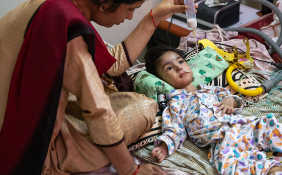IISc Scientists Discover a Method to Break Down Biofilm Barriers
Recent research from the Indian Institute of Science (IISc) has revealed a novel approach to combat antibiotic resistance. The study focuses on breaking down biofilm barriers that protect disease-causing bacteria. Biofilms are secreted by bacteria and act as formidable shields against drug penetration. This discovery has important implications for treating infections caused by opportunistic pathogens like Klebsiella pneumoniae.
About Biofilms
Biofilms are complex structures formed by bacteria. They consist of sugars, fats, proteins, and DNA. These layers create a protective environment for bacteria, making them resilient to antibiotics. Klebsiella pneumoniae is notorious for forming such biofilms, leading to severe hospital-acquired infections.
The Role of Enzymes
Enzymes play an important role in breaking down biofilms. The IISc team focused on polysaccharide-degrading enzymes. They aimed to disrupt the polysaccharide matrix that strengthens biofilms. The researchers identified enzymes that could effectively target and degrade these structures.
Source of Enzymes
The team explored enzymes from the bovine digestive system. Cows possess microbial enzymes that break down complex plant polysaccharides. This makes the cow’s gut an ideal source for biofilm-degrading enzymes. The researchers specifically sought glycoside hydrolases (GH), a group known for their ability to degrade polysaccharides.
Among the various enzymes, the IISc team identified GH-B2. This enzyme is found in the rumen, the largest stomach compartment of cows. It was artificially synthesised in the laboratory for further testing. The team hypothesised that GH-B2 could effectively degrade biofilms formed by K. pneumoniae.
Testing and Results
The lab-made GH-B2 was tested on four different strains of K. pneumoniae. These strains were isolated from various patients, showcasing diverse serotypes. Remarkably, GH-B2 succeeded in breaking down biofilms in all tested strains. This broad activity marks the enzyme’s potential effectiveness against varied bacterial forms.
The findings suggest a promising strategy to enhance drug delivery. By breaking down biofilm barriers, antibiotics could penetrate more effectively. This approach may reduce the incidence of antibiotic resistance in hospital settings. Enhanced treatment options could lead to better patient outcomes, especially for vulnerable populations.
Future Research Directions
Further research is needed to explore the full potential of GH-B2. Investigating its application in clinical settings could provide valuable insights. Additionally, understanding the enzyme’s mechanism of action will be crucial for optimising its use. The IISc team’s work opens new avenues for combating biofilm-associated infections.
#Antibiotics #BacterialInfections #AntibioticResistance #HealthCare #InfectionPrevention #AntibioticAwareness #Medicines #PublicHealth #MedicalScience #DrugResistance
Website Link : cellbiologist.org
Nomination Link : cellbiologist.org/award-nomination/?ecategory=Awards&rcategory=Awardee Contact Us: contact@cellbiologist.org
Follow Us On :
Twitter : twitter.com/account/access
Blogger : blogger.com/u/1/blog/posts/1155994660171864058
Pinterest : pinterest.com/researchs625/?actingBusinessId=907757006050531250
Linkedin : linkedin.com/in/research-scholar-10278a323/
Tumblr ; tumblr.com/




Comments
Post a Comment